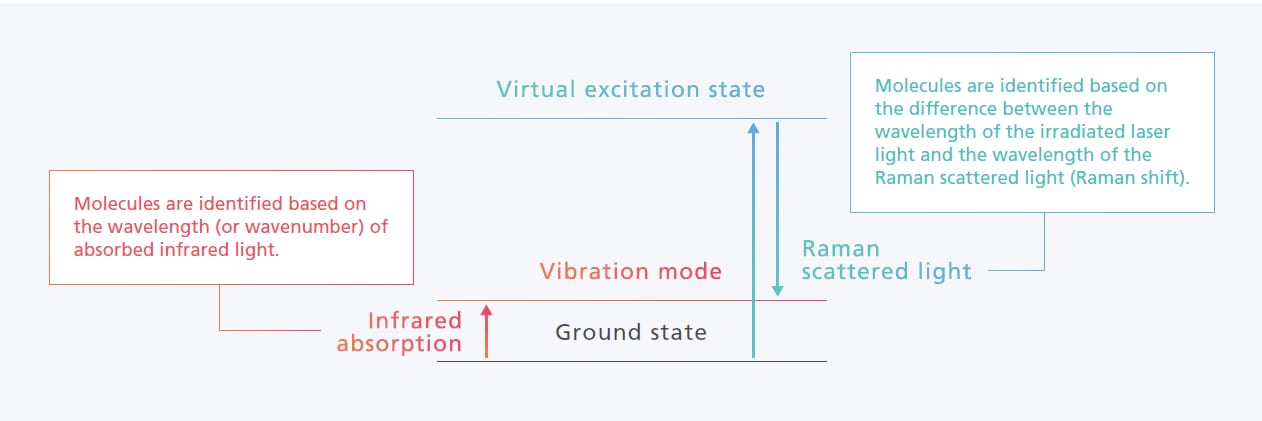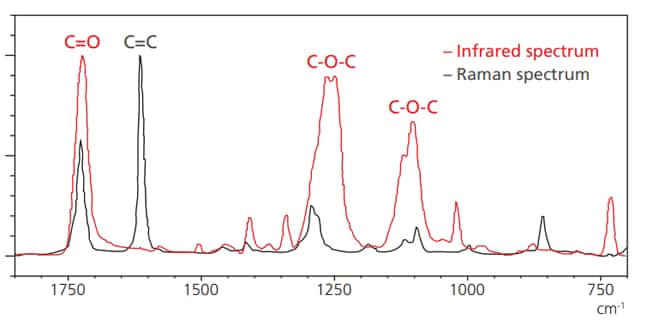Distribuidores
AIRsight - Soporte
Differences between Infrared Spectroscopy and Raman Spectroscopy
Infrared Spectroscopy
Samples are irradiated with infrared light to measure how much light is transmitted through the sample and how much is reflected.
Raman Spectroscopy
Samples are irradiated with laser light to measure the amount of Raman scattering that occurs from the sample.

Enables Acquisition of Mutually
Complementary Molecular Information
Infrared and Raman Spectra of Polyester
(Laser Wavelength: 532 nm)
| Infrared Spectroscopy is Better-Suited | Raman Spectroscopy is Better-Suited |
|---|---|
| Polar bonds O-H, N-H, C=O, C-O-C |
Non-polar bonds C=C, S-S, C-S |

Infrared Spectroscopy
Applicable components: Plastics, organic food components, and some inorganic components
Features
- Widely used, resulting in plentiful application examples
- Extensive spectral libraries available
- Rarely damages samples
- ATR (optional), transmission, or reflection methods can be selected depending on the sample
Raman Spectroscopy
Applicable components: Carbon materials (CNT, DLC, diamond, etc.), pigments, additives and other inorganic substances, and some organic substances
Features
- Especially well-suited for analyzing carbon materials (carbon nanotubes, diamond, etc.)
- Enables analysis in the depth direction
- Transparent materials (glass, etc.) do not absorb visible laser light, so samples can be measured directly in containers
- High spatial resolution (extremely small areas can be targeted)
Infrared Raman Microscopy AIRsight is a microscope system that can perform two analytical methods, infrared spectroscopy and Raman spectroscopy, in the same instrument.
This video is an overview of the features of the device.
00: 00 Equipment Configuration
01: 08 Same Position
01: 49 Smart Software
02: 47 Single System
03: 50 Introducing the specifications


